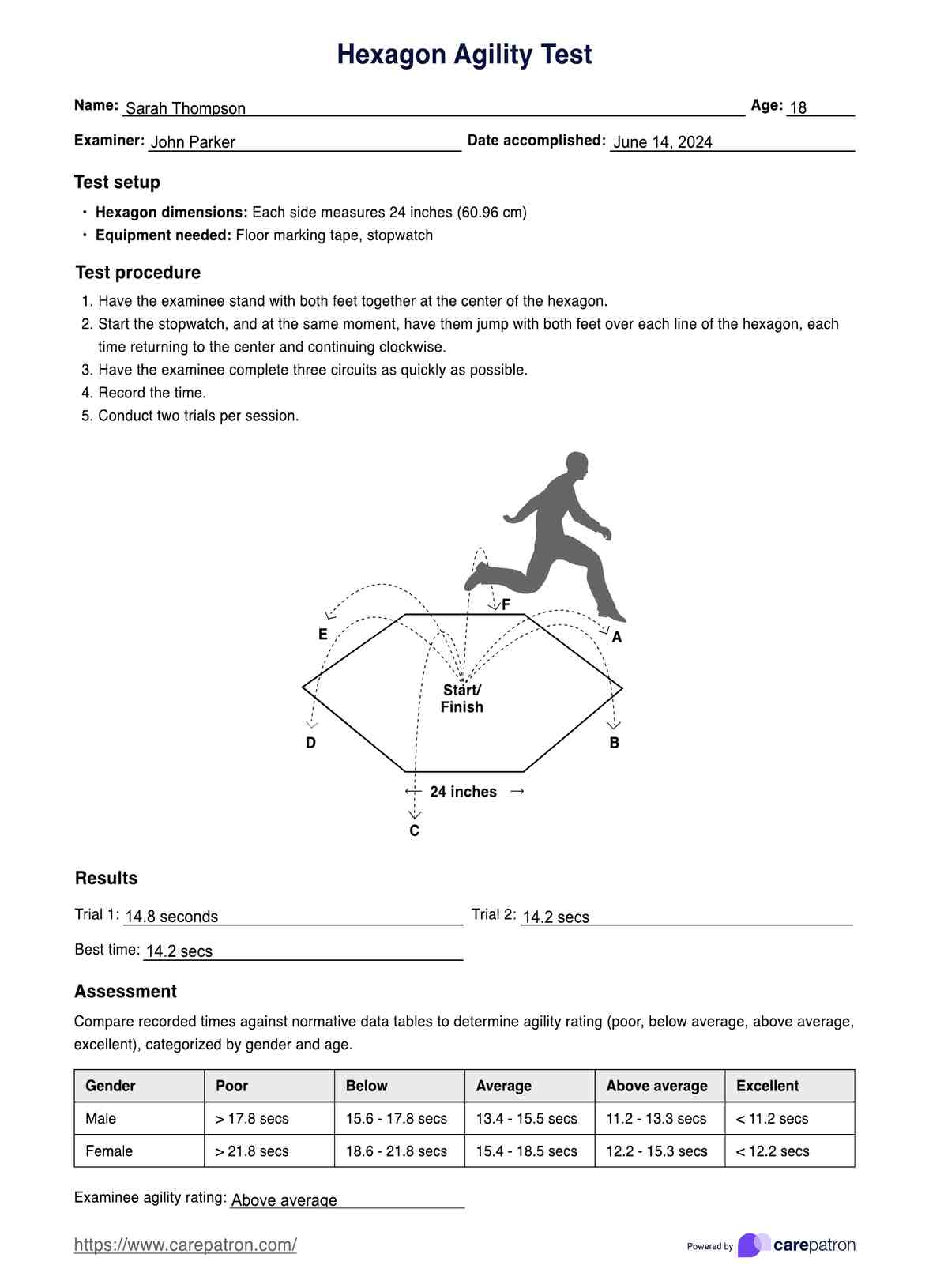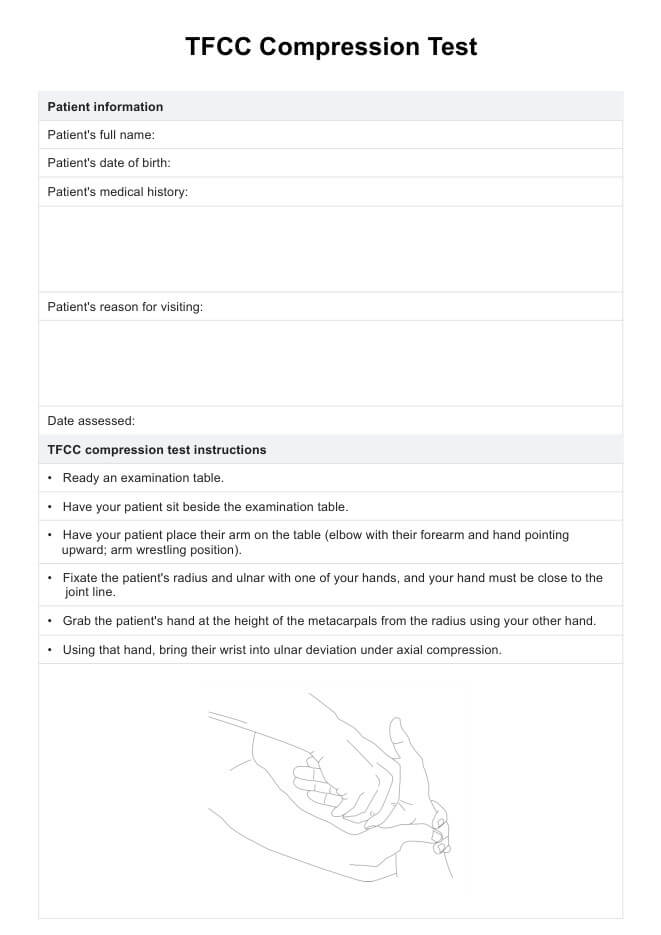Hexagon Agility Test
Discover the Hexagon Agility Test: a crucial tool for measuring athlete agility, coordination, and performance. Download our free template for accurate, standardized testing.


What is the Hexagon Agility Test?
The Hexagon Agility Test is a comprehensive assessment used to gauge an individual's agility and coordination, which is crucial for sports that require rapid directional changes.
This test, particularly valuable for evaluating athletes engaged in sports like basketball, soccer, and tennis, involves navigating a hexagonal pattern on the floor to measure quickness and efficiency in movement. The hexagon test requires quick footwork and assesses line-to-line transitions, highlighting areas for potential improvement in athletes.
Participants are challenged to complete at least one circuit around the middle of the hexagon, with their performance timed via stopwatch. This test categorizes agility based on performance and gender—excellent performance for females is around the same as above-average performance for males. The national norms are based on recorded times by 16-19-year-old athletes.
Initial reviewer note: Weird turn of phrase, but it's a keyword. I put in two of the weird keywords in case one of them is too weird to keep. At least one is needed to keep the score above 69. There's another one later on.
An alternative form called the hexagonal obstacle test or the hex jump test exists, where there are hurdles of varying heights placed in a hexagon instead of flat lines on the ground. This requires the examinee to hop higher than they would on the Hexagon Agility Test.
Hexagon Agility Test Template
Hexagon Agility Test Example
How to perform the Hexagon Agility Test
To conduct the Hexagon Agility Test effectively, you'll need the following equipment and setup:
- Hexagon outline: Mark a hexagon on the floor, measuring approximately 24 inches on each side. This setup is essential for the test. The six sides are marked Line A, Line B, Line C, and so on to make it easier for the examinee to know which point they are jumping to next.
- Stopwatch: Required for timing the circuits accurately. If you are testing your own performance, you can just hold the stopwatch while jumping instead of setting it on the floor; stopwatch assistant not required, but having one helps.
Initial reviewer note: Weird turn of phrase, but it's a keyword. I put in two of the weird keywords in case one of them is too weird to keep. At least one is needed to keep the score above 69.
Ensure that you explain the procedures to the examinee so that they know how the test goes and can perform at their best. Here's how it would go:
- Have the examinee stand with both feet together at the center of the hexagon, facing Line A.
- Start the stopwatch, and at the same time, command the examinee jump over each hexagon line and return to the center, proceeding clockwise.
- Have the examinee three circuits as rapidly as possible to assess agility.
- Record the time.
- Allow the examinee to do trials, and use the best of the two recorded times to assess their agility rating.
Scoring, interpretation, and next steps of the Hexagon Agility Test
The Hexagon Agility Test is a dynamic assessment tool for evaluating an athlete's agility through timed, directional jumps within a hexagonally shaped course. This test focuses on the athlete's ability to change direction in response to complex spatial demands rapidly.
Our template's example showcases a standardized approach to executing and scoring the test, making it a valuable practical guide for enhancing agility training protocols.
Benefits of the Hexagon Agility Test and template
The Hexagon Agility Test and its dedicated template provide a structured tool for evaluating and enhancing an athlete's agility. This test measures agility through a series of quick directional changes, which is vital for assessing athletic performance and identifying areas for improvement.
The template enables precise and consistent recording of each session's outcomes, such as times and missteps, including any deviations from the correct path, like crossing the wrong line or failing to complete a circuit.
This systematic recording helps monitor improvements across different trials, jump from the initial to the second test, and make data-driven decisions regarding training adjustments. The structured format ensures that performance assessments are accurate and comparable over time, supporting targeted improvements in agility, which is essential for athletes striving for excellence in competitive environments.
Commonly asked questions
The Hexagon Agility Test is designed to evaluate an individual's agility, balance, and quick movement capabilities, which are essential for optimal performance in competitive sports. It assesses how swiftly one can change direction, which is crucial for both average and elite athletes.
This test is particularly beneficial for athletes engaged in sports that require rapid directional changes and those recovering from lower limb injuries. The test is best suited for 16-19 year old examinees since the national norms available are for 16-19 year olds.
The Hexagon Agility Test should be conducted periodically to monitor progress and fine-tune training needs. This regular assessment helps ensure that training adjustments are made based on precise agility requirements.

.jpg)




































































































